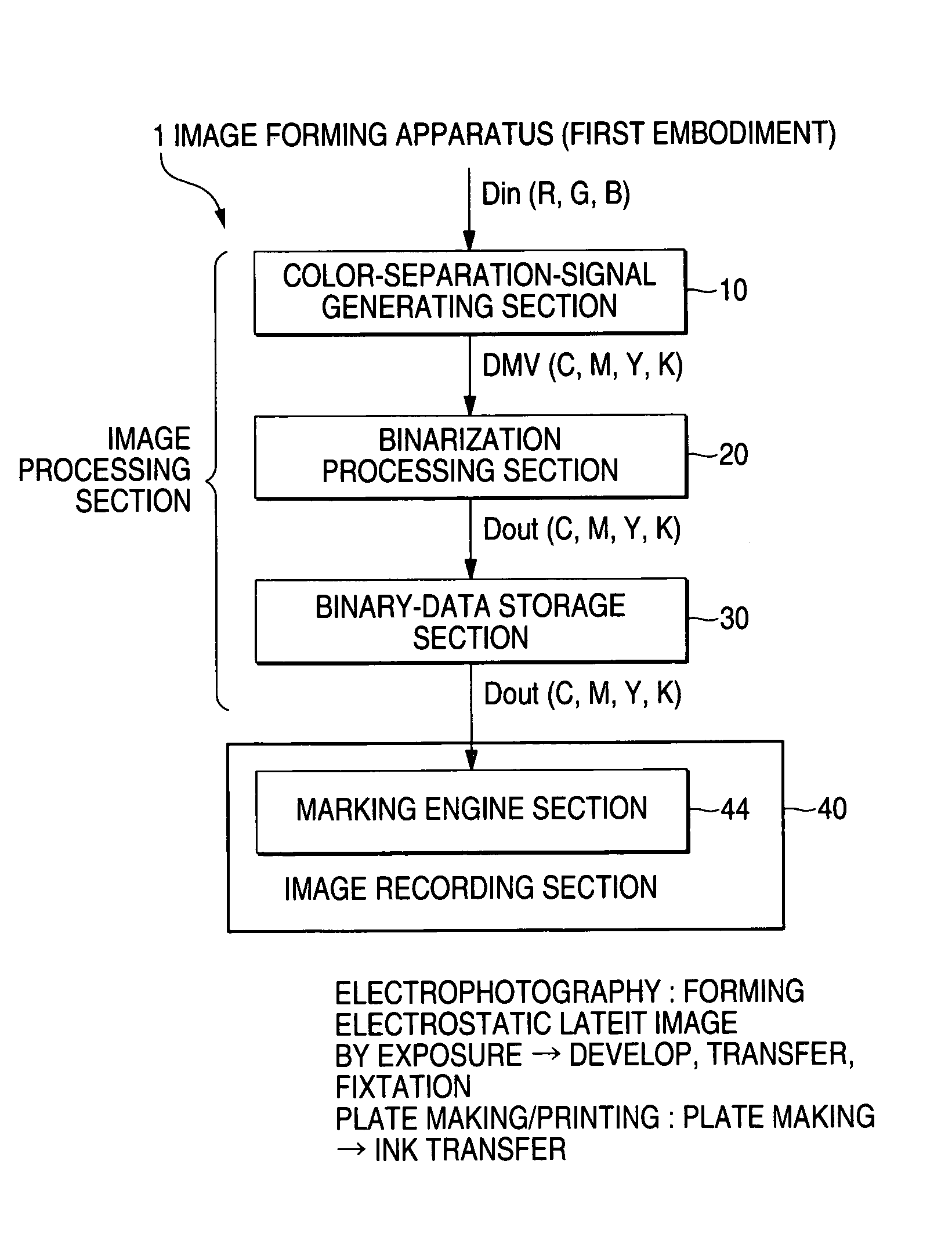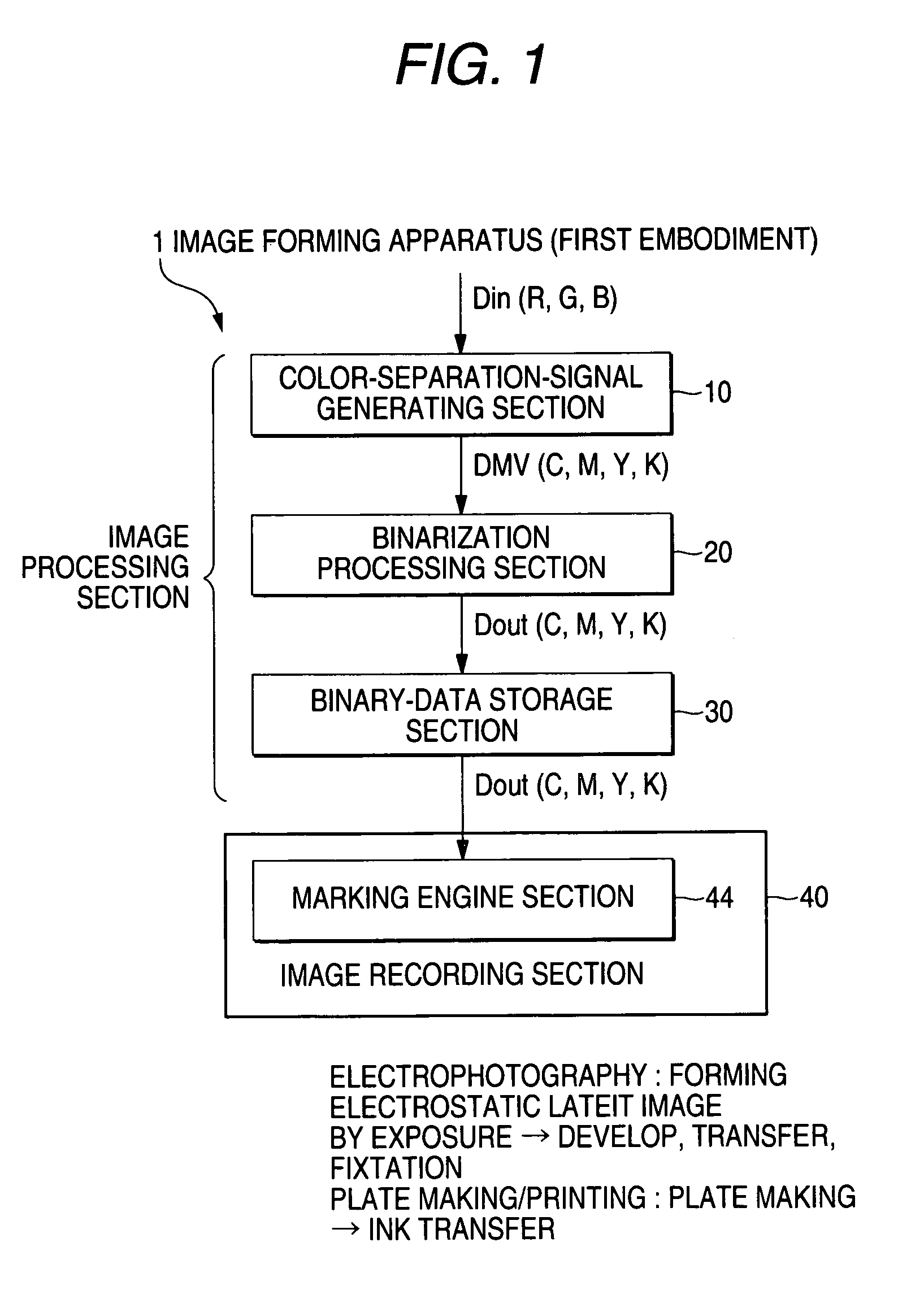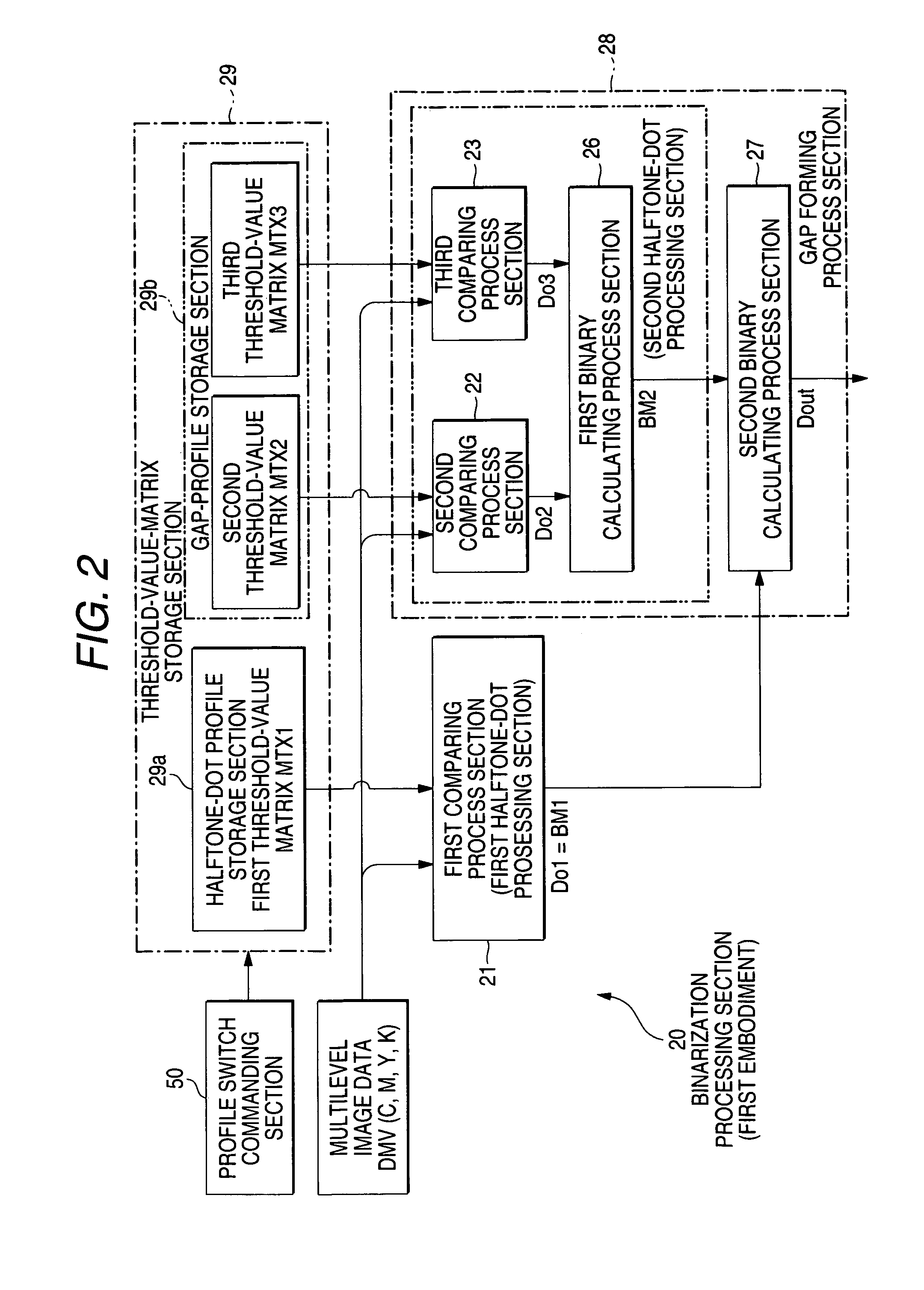Halftone dot formation method and apparatus for reducing layer thickness of coloring material inside halftone dots, and image formation apparatus
a technology of halftone dots and coloring materials, which is applied in the field of binarization processing techniques, can solve the problems of difficult compatibility of high possibility of this problem, and excessive amount of toner for halftone reproduction, so as to achieve effective thinning of the coloring material of the halftone-dot portion, reduce the thickness of the coloring material inside the halftone dot, and achieve the effect of reducing the amount of toner needed for the maximum density
- Summary
- Abstract
- Description
- Claims
- Application Information
AI Technical Summary
Benefits of technology
Problems solved by technology
Method used
Image
Examples
first embodiment
[0056]The binarization processing section 20 has features that it includes a plurality of sets of comparators for binarization and threshold-value matrixes, and that a plurality of calculation processors for performing a logic operation for binary data output from the comparators, as compared with conventional examples. In addition, the respective sets of the comparators for binarization and the threshold-value matrixes are modules, which can form the same halftone-dot structures, but are characterized by the values of the threshold-value matrixes.
[0057]Specifically, as shown in the figure, the binarization processing section 20 according to the first embodiment includes three comparing sections 21, 22 and 23 for performing a comparison process for binarization by referring to the multilevel data to be processed and the threshold-value matrix, two binary calculating process sections 26 and 27 for performing a logic operation for binary data output from the comparing sections 21, 22...
second embodiment
[0111]Specifically, as shown in FIG. 9, an image forming apparatus 1 includes a color-separation-signal generating section 10, a binarization processing section 60, a binary-data storage section 30, and an image recording section 70.
[0112]Even though not shown, the binarization processing section 60 of the second embodiment has a configuration in which the second binary calculating process section 27 in the binarization processing section 20 of the first embodiment is removed.
[0113]The image recording section 70 has a modulation controlling section 72 for generating output modulation data DEX for recording and a marking engine 74 for performing an image recording process on the basis of the output modulation data DEX generated by the modulation controlling section 72.
[0114]The binarization processing section 60 provides the first bitmap data BM1 (the first binary data Do1) output from the first comparing process section 21 to an on / off control input terminal 72a of the modulation c...
third embodiment
[0140]By changing parameters of the FIGS. 14(B), (C) and (D), the third embodiment can be applied as shown in the image example of the second example, unlike the image example of the first example. In this second example, if the multilevel image data DMV takes lower density (in this case, 12.5% to 15%), gap exists in the line structure. However, if the multilevel image data DMV takes further higher density and is in a predetermined density range (in this example, 50% to 75%), it is maintained that the non-output dots are in an isolated state. That is, it is possible that the non-output dots are not continued in the line-shaped halftone dot.
[0141]In this case, unlike the first example, the non-output dots (gap) having a size to some extent can be generated surely even on the high-density side. Therefore, even in the case where the number of screen lines becomes large, the phenomenon that the gap becomes narrow on the high-density side can be prevented by maintaining the non-output do...
PUM
 Login to View More
Login to View More Abstract
Description
Claims
Application Information
 Login to View More
Login to View More - R&D
- Intellectual Property
- Life Sciences
- Materials
- Tech Scout
- Unparalleled Data Quality
- Higher Quality Content
- 60% Fewer Hallucinations
Browse by: Latest US Patents, China's latest patents, Technical Efficacy Thesaurus, Application Domain, Technology Topic, Popular Technical Reports.
© 2025 PatSnap. All rights reserved.Legal|Privacy policy|Modern Slavery Act Transparency Statement|Sitemap|About US| Contact US: help@patsnap.com



